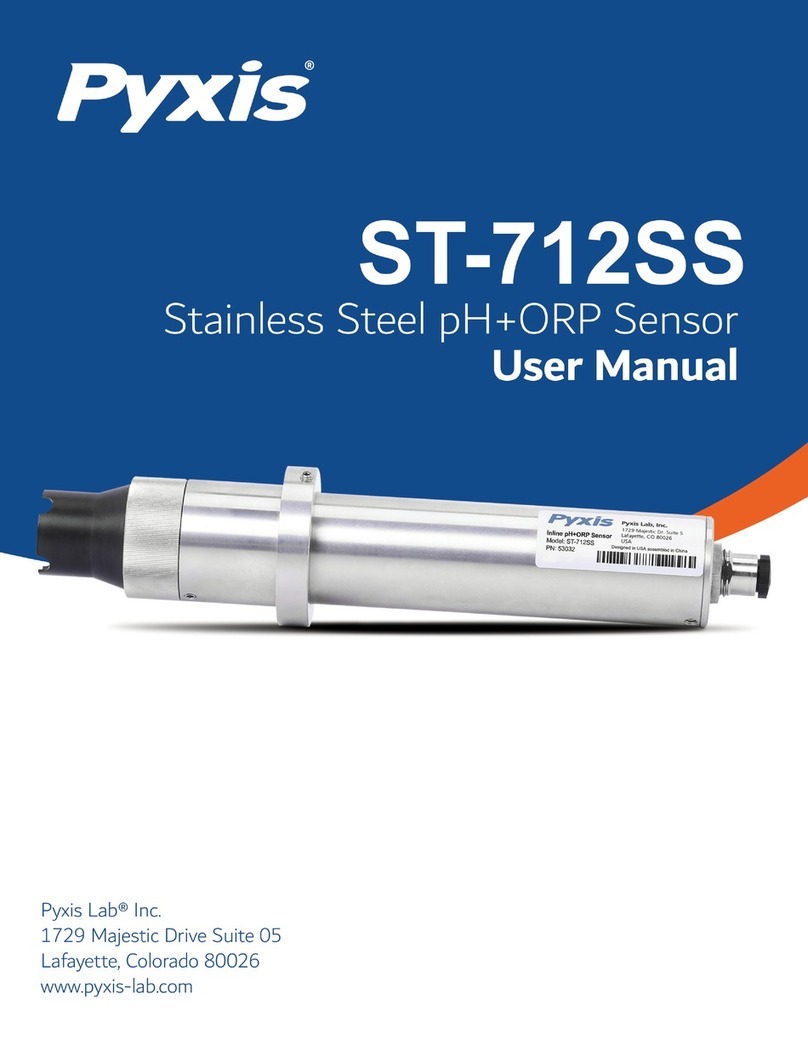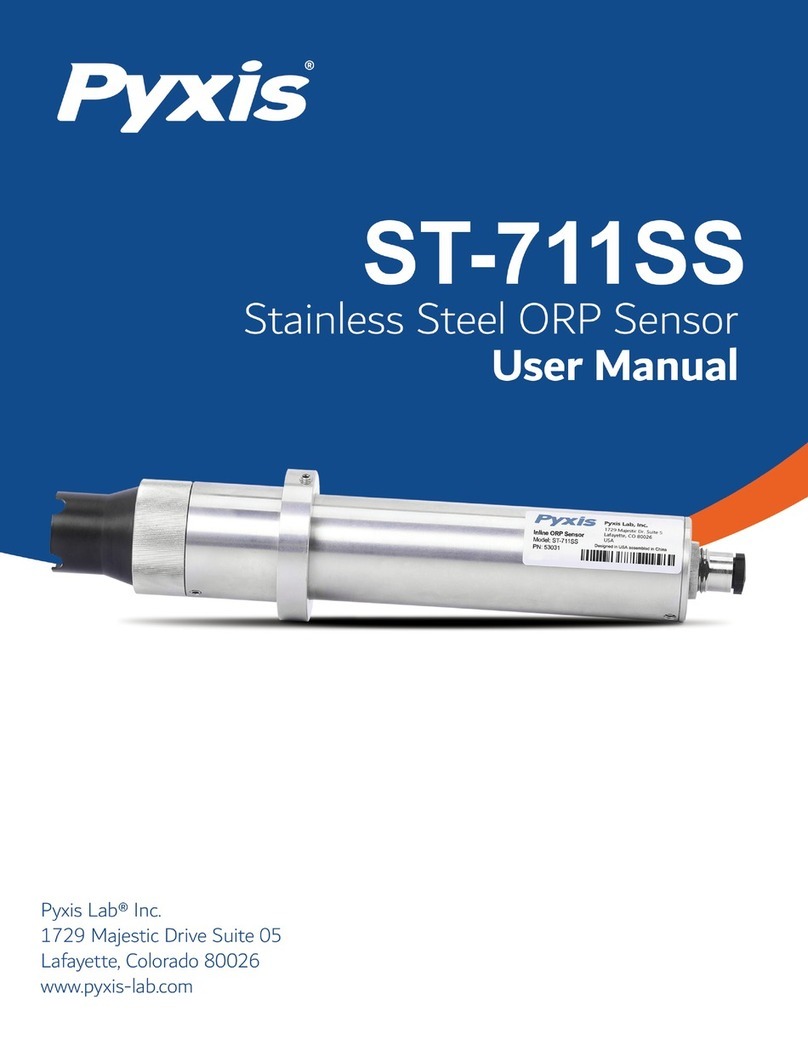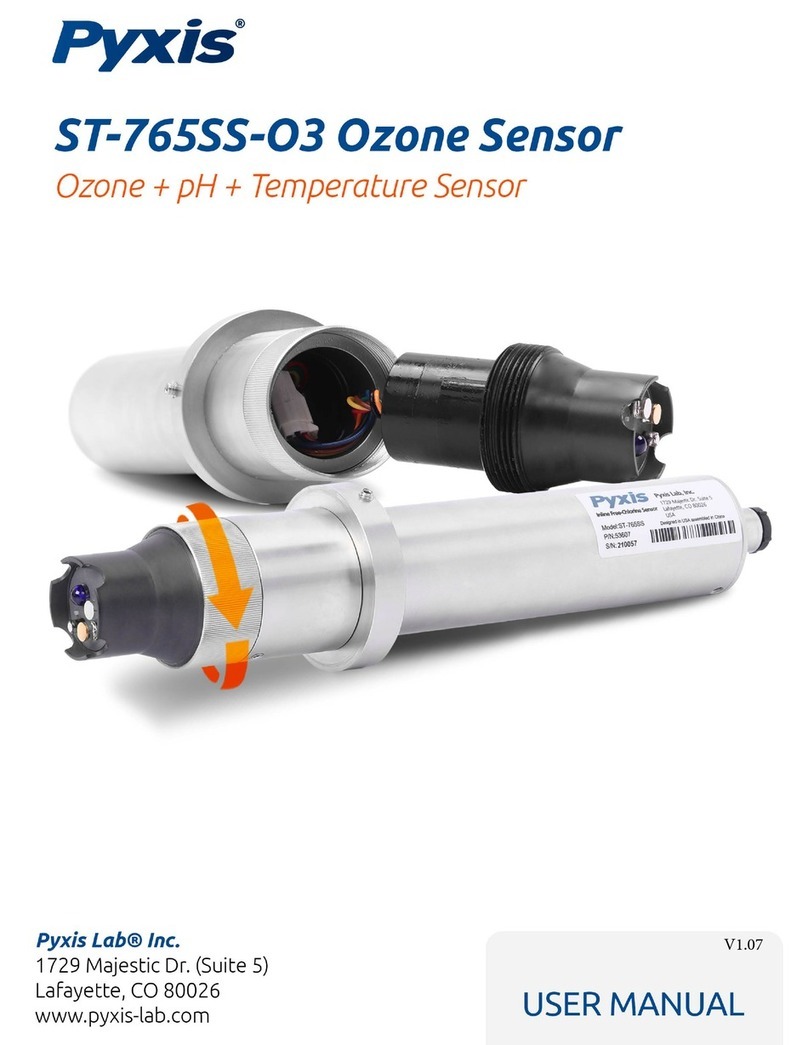
Pyxis LT-63X Series User Manual service@pyxis-lab.com | +1 (866) 203-8397 3
Table of Contents
1 Introduction....................................................................................................................................4
1.1 Features ............................................................................................................................................ 4
1.2 Specifications .................................................................................................................................... 5
1.3 Unpacking the Pyxis LT-63X Series Sensor........................................................................................ 5
1.4 Standard Accessories ........................................................................................................................ 6
1.5 Optional Accessories......................................................................................................................... 6
2Quick 4-20mA Start ........................................................................................................................7
3Installation.....................................................................................................................................8
4Calibration and Diagnosis .............................................................................................................10
4.1 Calibration and Diagnosis by uPyxis Mobile APP ............................................................................ 10
4.1.1 Calibration................................................................................................................................... 11
4.1.1.1 Deionized Water Calibration......................................................................................................12
4.1.1.2 Mid-Range Calibration ............................................................................................................... 12
4.1.1.3 High-Range Calibration ..............................................................................................................13
4.1.2 Restore to Factory Calibration Settings ......................................................................................14
4.1.3 Diagnosis ..................................................................................................................................... 15
4.1.4 Cleaning Period Adjustment .......................................................................................................16
4.2 Calibration and Diagnosis by uPyxis Desktop APP .......................................................................... 17
4.2.1 Calibration................................................................................................................................... 20
4.2.1.1 Deionized Water Calibration......................................................................................................21
4.2.1.2 Mid-Range Calibration ............................................................................................................... 21
4.2.1.3 High-Range Calibration ..............................................................................................................22
4.2.2 Restore to Factory....................................................................................................................... 23
4.2.3 Diagnosis ..................................................................................................................................... 24
4.2.4 Cleaning Period Adjustment .......................................................................................................24
5Modbus RTU ................................................................................................................................25
6Sensor Cleaning and Maintenance ................................................................................................25
7Sensor Wiper Replacement Instructions........................................................................................26
8Contact Us ...................................................................................................................................27

































